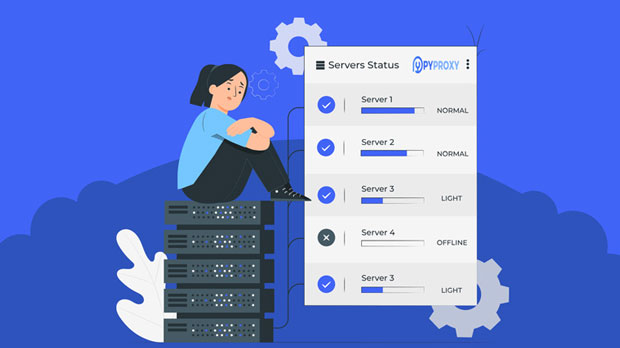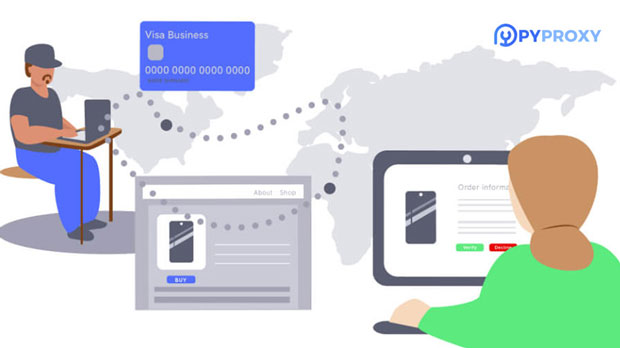LunaProxy vs PYProxy.com Spinning Residential Proxy, which provides easier API integration?
When choosing a rotating residential proxy service, businesses and developers often look for an API that is not only reliable but also easy to integrate into their existing systems. Both LunaProxy and PYPROXY.com offer rotating residential proxies with APIs that promise seamless functionality. However, determining which one is easier to integrate into various tech stacks requires a closer look at their features, documentation, support, and overall user-friendliness. In this article, we will break down and compare these services in terms of API integration, making it easier for developers to decide which one suits their needs best. Understanding rotating residential proxiesBefore diving into the comparison of APIs, it's essential to first understand the concept of rotating residential proxies. Residential proxies route internet traffic through real devices (e.g., phones, laptops) using real IP addresses from Internet Service Providers (ISPs). This contrasts with data center proxies, which are often flagged by websites due to their non-human origin. Rotating residential proxies ensure that each request uses a different IP address, making it harder for websites to detect automated bot activity.This type of proxy service is especially valuable for tasks like web scraping, data extraction, and anonymous browsing, where rotating IPs help avoid IP bans and CAPTCHA prompts. An easy-to-integrate API allows developers to leverage the benefits of rotating residential proxies without complex configuration or downtime.Overview of LunaProxy's API IntegrationLunaProxy provides a flexible and robust API for integrating its rotating residential proxies. Their API is designed to be intuitive and user-friendly, allowing developers to get started quickly without requiring an in-depth understanding of proxy configurations.Documentation and Developer SupportThe strength of any API lies in its documentation. LunaProxy provides comprehensive, well-structured API documentation that covers all aspects of integration, from authentication to advanced configurations. Their API documentation is organized and provides clear examples, allowing developers to easily follow the instructions.In terms of developer support, LunaProxy offers responsive customer service and a variety of channels to get in touch, including email support and live chat. This ensures that any integration issues or questions are addressed quickly, which can significantly speed up the development process.API Functionality and Ease of UseLunaProxy’s API offers several features that enhance its ease of integration. It supports multiple programming languages, including Python, Node.js, and Java, making it versatile for a wide range of applications. The API allows developers to manage rotation parameters, access geo-targeted IPs, and monitor usage with minimal effort.Additionally, LunaProxy’s API enables automatic IP rotation, meaning developers do not need to manually manage the rotation process. This feature is particularly beneficial for web scraping or any task requiring a high level of anonymity.Security and ReliabilityLunaProxy also emphasizes security by providing encrypted connections, which ensures that all API interactions are secure. Their residential proxies are also designed to avoid detection, enhancing their overall reliability. With uptime guarantees and a track record of minimal service interruptions, LunaProxy’s API integrates seamlessly into production environments.Overview of PYProxy.com’s API IntegrationOn the other hand, PYProxy.com also offers a competitive API solution for rotating residential proxies. While their API is similar in functionality, some key differences in documentation and ease of integration set them apart from LunaProxy.Documentation and Developer SupportPYProxy.com’s API documentation is comprehensive but may not be as user-friendly as LunaProxy’s. While it covers most of the essential integration steps, some developers may find it slightly less intuitive, especially if they are unfamiliar with proxy integration. PYProxy.com does provide examples and detailed explanations, but the structure could be clearer.In terms of support, PYProxy.com offers dedicated customer service, but the response times may not be as fast as LunaProxy’s. Some developers have reported slower email responses, especially during peak hours. However, they do provide resources like a knowledge base and FAQ section to help troubleshoot common issues.API Functionality and Ease of UseThe functionality of PYProxy.com’s API is quite robust, supporting various programming languages such as Python, PHP, and Ruby. The API allows users to configure IP rotation settings, choose geo-targeted locations, and manage proxy usage statistics. However, developers might find the API's interface slightly more complex compared to LunaProxy’s.While PYProxy.com offers automated IP rotation, the configuration process is slightly more involved, requiring developers to fine-tune certain parameters manually. This added flexibility can be an advantage for more advanced use cases but may present a challenge for developers looking for a quick and simple integration.Security and ReliabilityPYProxy.com also prioritizes security and provides encrypted connections for all API interactions. Their residential proxies are designed to bypass anti-bot measures and provide reliable performance. However, some users have reported occasional downtime or slower speeds during high-traffic periods, which may affect overall reliability. This could be a concern for developers seeking 100% uptime for mission-critical applications.Comparison of API Integration: Key Considerations1. Documentation and Ease of UseLunaProxy’s API is generally easier to integrate due to its well-organized, clear documentation. Developers can get started with minimal learning curve, and the examples provided are straightforward. PYProxy.com’s documentation, while still solid, may require additional effort to fully comprehend, especially for beginners.2. API FunctionalityBoth services offer comparable functionality in terms of rotating IPs, geo-targeting, and usage monitoring. However, LunaProxy provides a slightly more streamlined and automated experience, which reduces the manual configurations needed by developers. PYProxy.com, on the other hand, offers more customization options, but at the cost of a more complex setup.3. Developer SupportLunaProxy stands out in terms of developer support. With quicker response times and a more robust customer service structure, developers are more likely to get timely assistance when they encounter issues. PYProxy.com’s support is adequate, but slower response times may pose a challenge for those in need of immediate help.4. Security and ReliabilityBoth services prioritize security, providing encrypted connections for API interactions. However, LunaProxy’s track record of minimal service disruptions and higher reliability gives it an edge in terms of uptime. PYProxy.com, while secure, may experience occasional slowdowns, which could affect certain use cases.ConclusionIn conclusion, both LunaProxy and PYProxy.com offer competitive APIs for rotating residential proxies, but LunaProxy’s API is generally easier to integrate due to its more intuitive documentation, streamlined setup, and faster developer support. Developers who need a quick and efficient solution with minimal configuration would likely benefit from LunaProxy’s approach. However, if a high level of customization and control over the integration process is needed, PYProxy.com’s API might be a better fit, although it requires more effort in terms of configuration and troubleshooting.Ultimately, the choice between these two services depends on the specific needs of the project, but for ease of integration and developer-friendly features, LunaProxy tends to be the better option for most users.
2025-02-22
























































